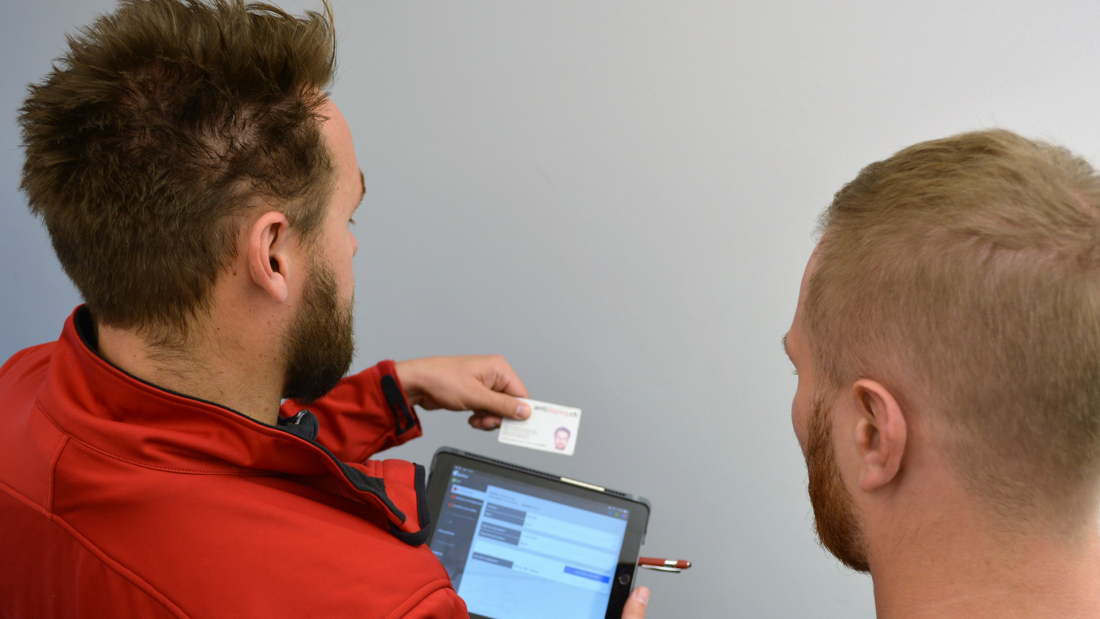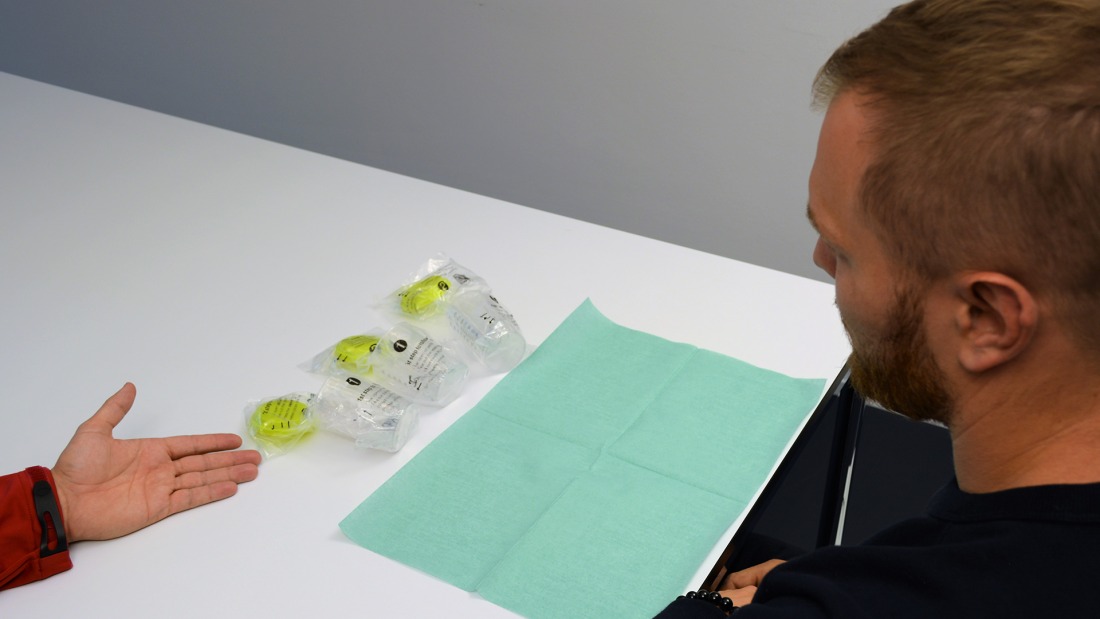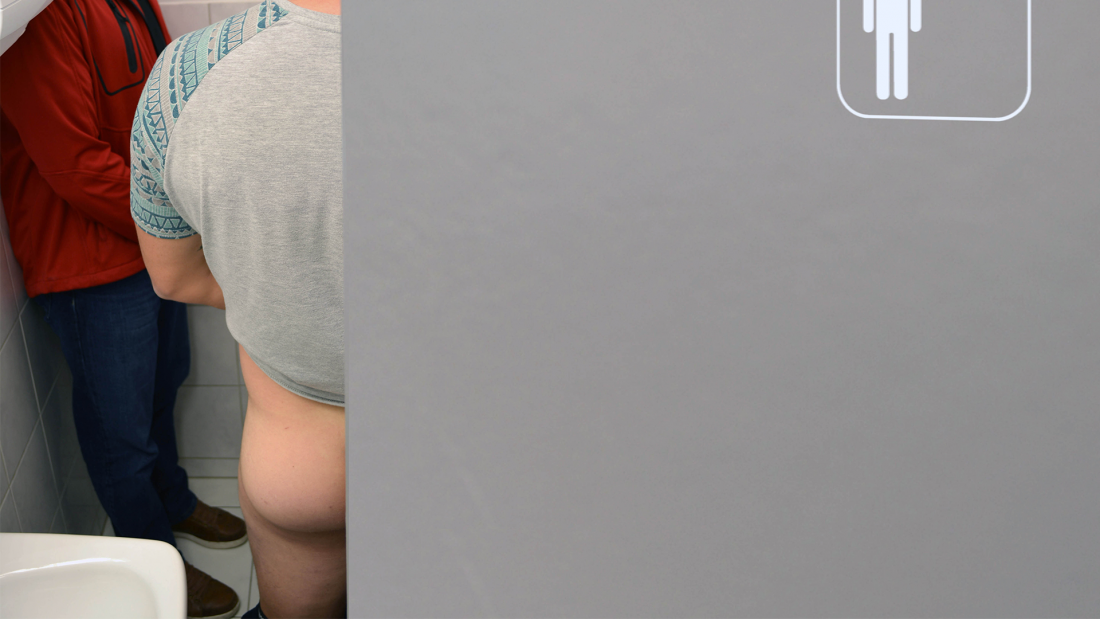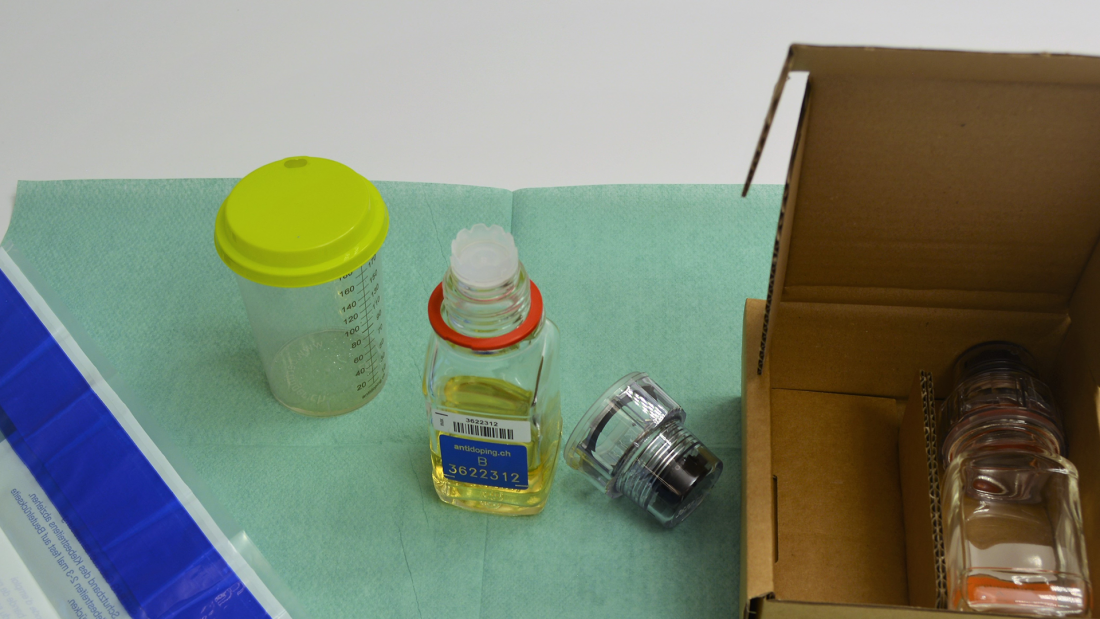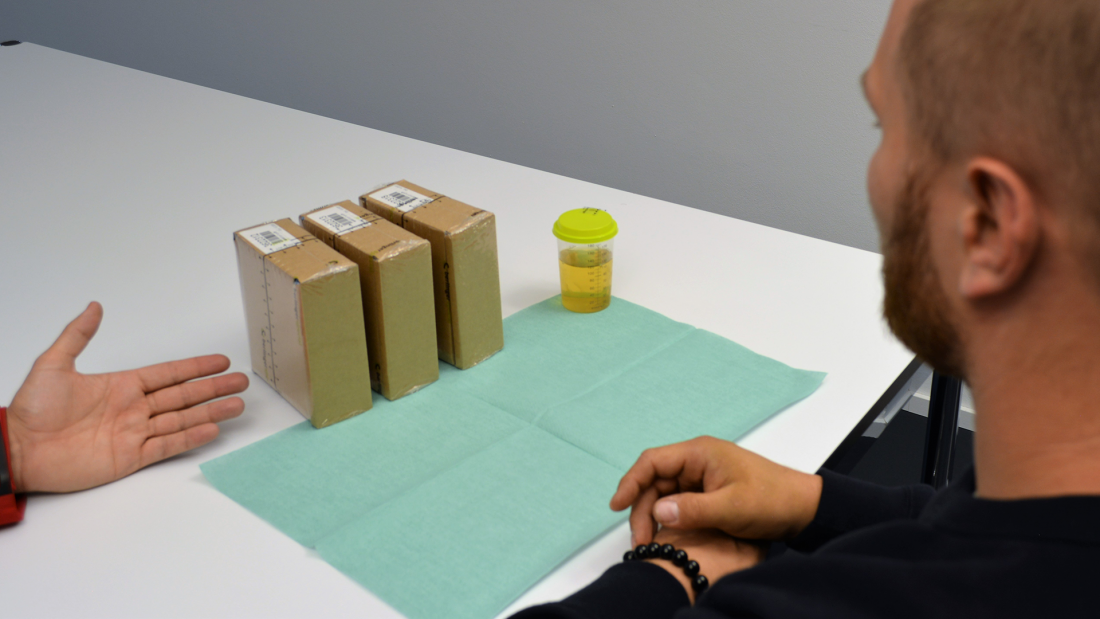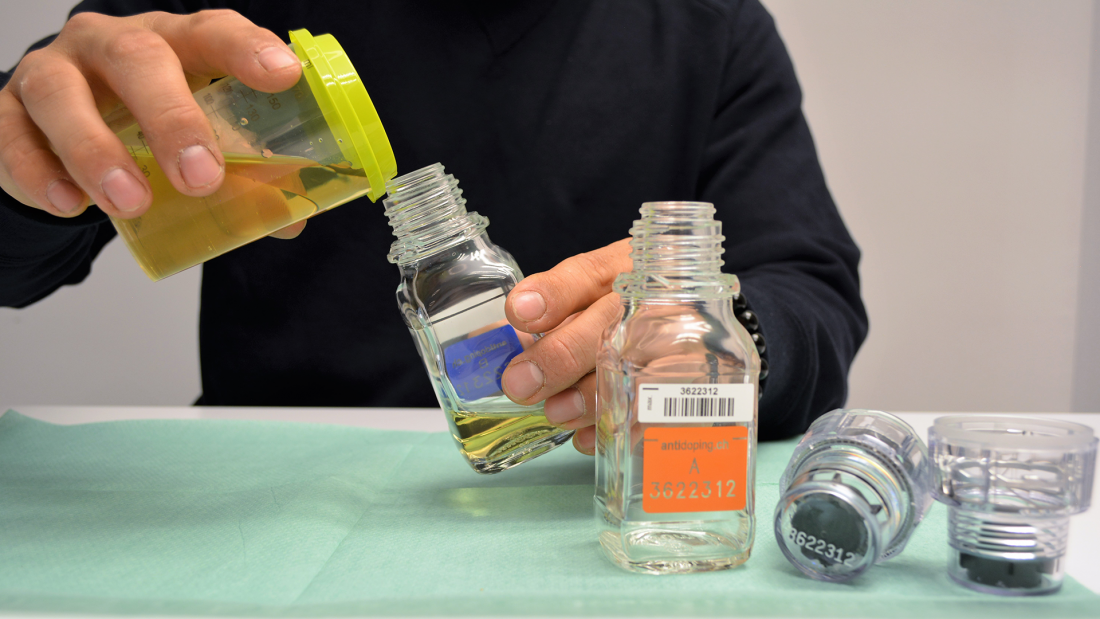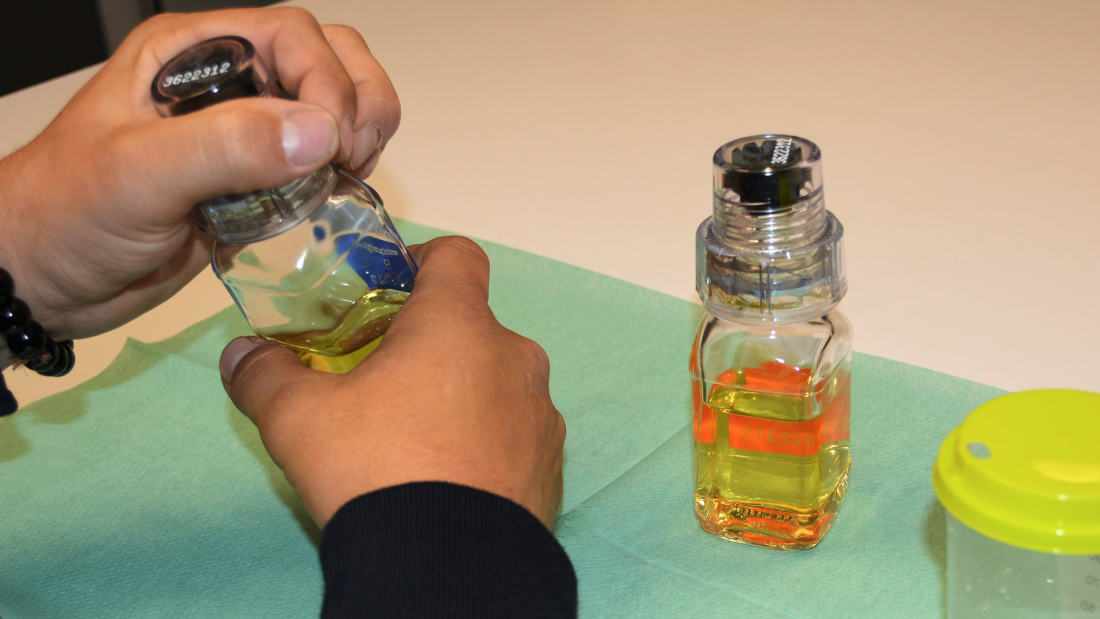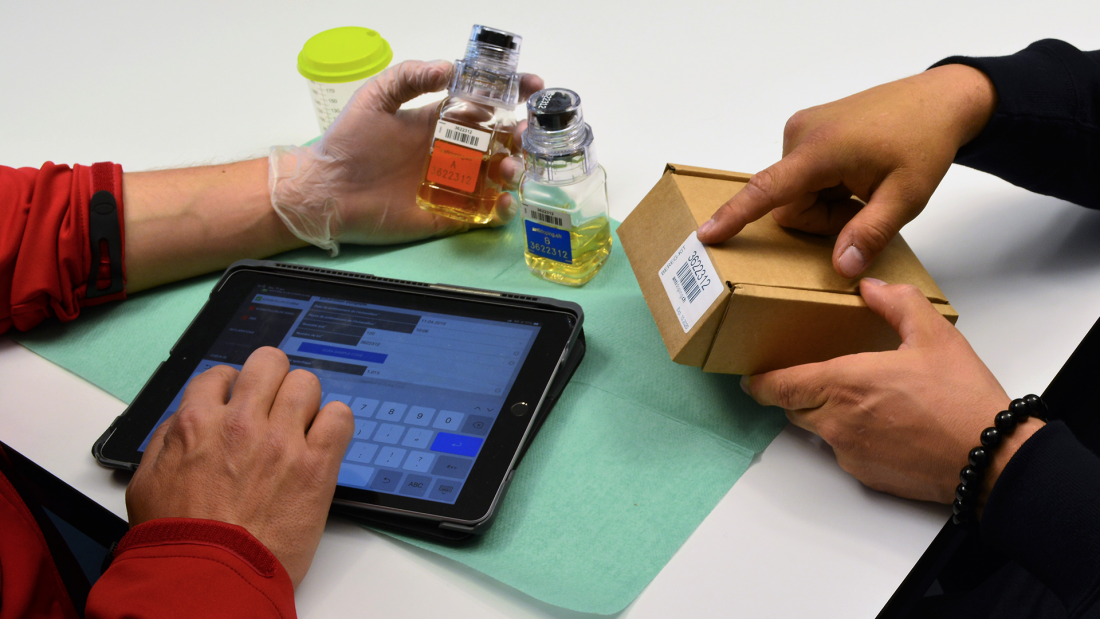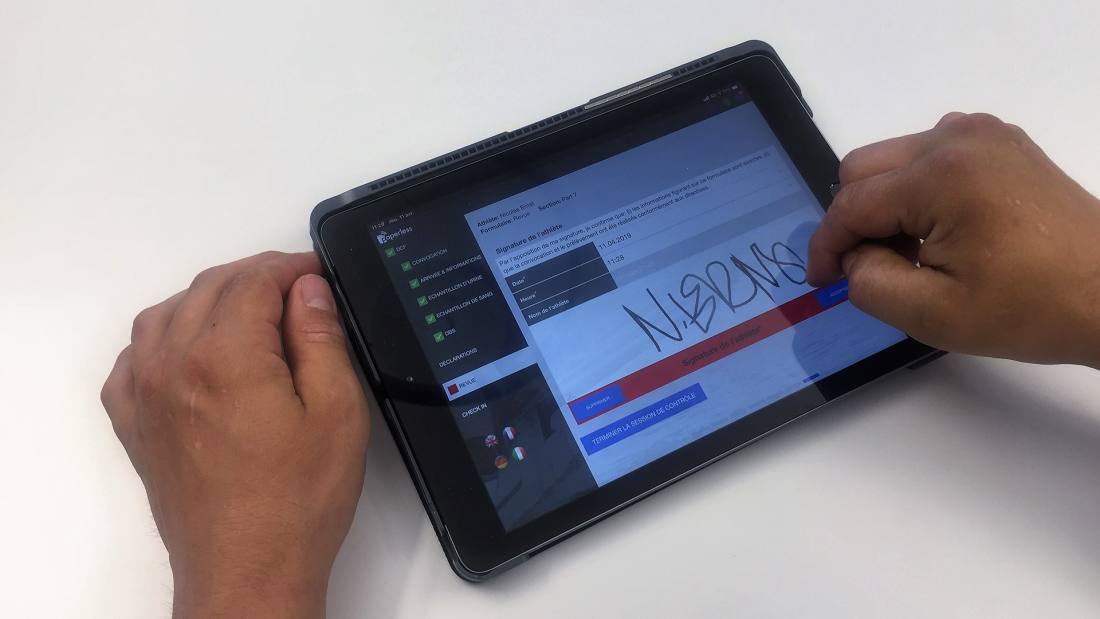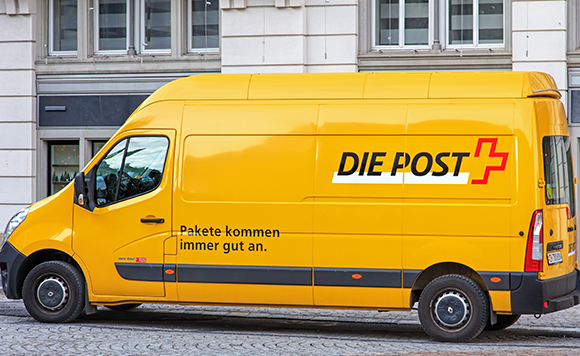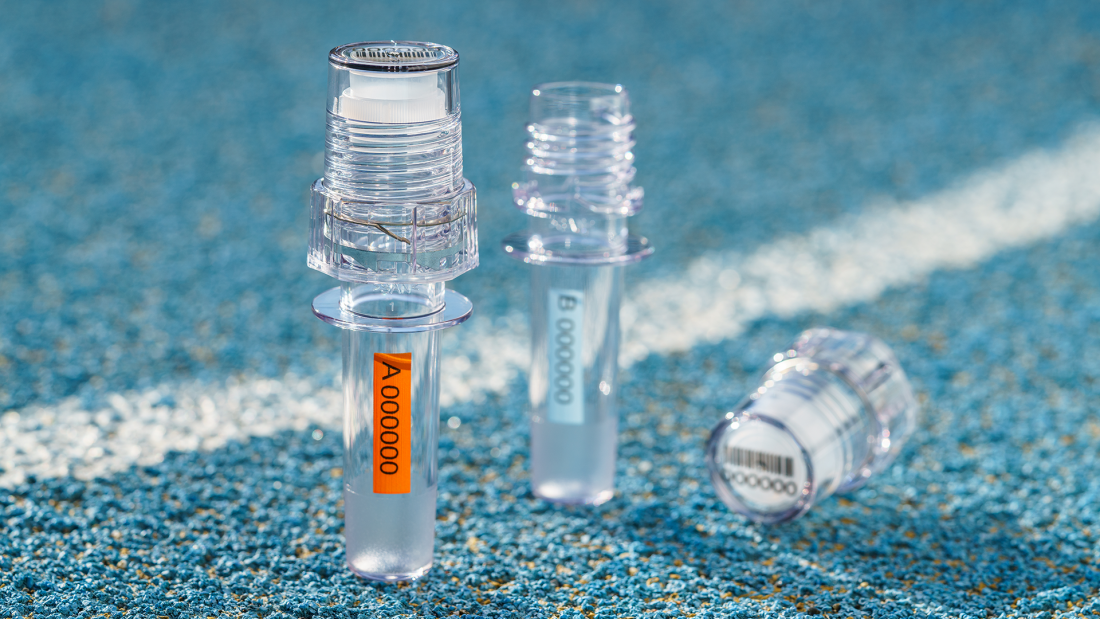When Alex is ready to provide a urine sample, he is accompanied by a DCO of the same gender. Where the facilities allow it, Alex is instructed to wash his hands thoroughly with water (without soap) before giving the urine sample. Alex then unpacks the urine container, and the packaging is disposed of.
Before giving the sample, Alex must remove his clothing from the abdomen down to the knees and roll his sleeves up to his elbows to avoid any risk of manipulation. At least 90 ml of urine are needed for the test. Back in the testing area, the amount of urine collected is entered on the doping control form.
